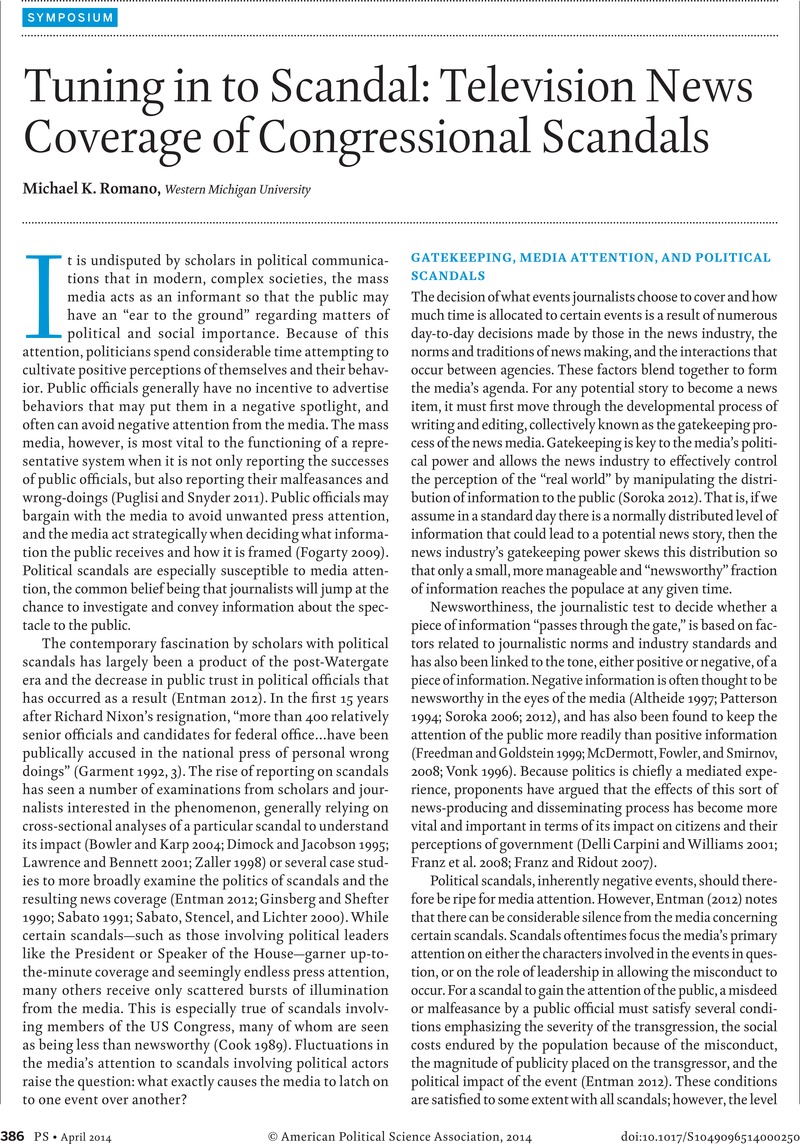Crossref Citations
This article has been cited by the following publications. This list is generated based on data provided by Crossref.
Gaskins, Ben
Seljan, Ellen
Lochner, Todd
Kowal, Katie
Dundon, Zane
and
Gold, Maya
2019.
From the FEC to the Ballot Box: Voter Accountability for Campaign Finance Law Violations.
American Politics Research,
Vol. 47,
Issue. 5,
p.
1000.
Paschall, Collin
Sulkin, Tracy
and
Bernhard, William
2020.
The Legislative Consequences of Congressional Scandals.
Political Research Quarterly,
Vol. 73,
Issue. 2,
p.
293.
Waggoner, Philip D.
and
Creekmore, Andrew
2024.
Exploring the effects of allegations of sexual misconduct on political careers.
The Social Science Journal,
Vol. 61,
Issue. 2,
p.
444.
Gainous, Jason
Hendricks-Benton, Alyson
Reuss, Lauren
Sowders, Taylor
Clevenger, Forest
Stottman, Samuel
Mattingly, Julia
and
Beilman, Bella
2025.
Political Evaluations and Spousal Responses to Candidate Infidelity: Should I Stay or Should I Go?.
Journal of Political Marketing,
p.
1.
Nawara, Steven P.
and
Bailey, Mandi
2025.
Scandal-ridden campaigns: the relationship between cognitive load and candidate evaluation.
The Social Science Journal,
Vol. 62,
Issue. 1,
p.
57.



